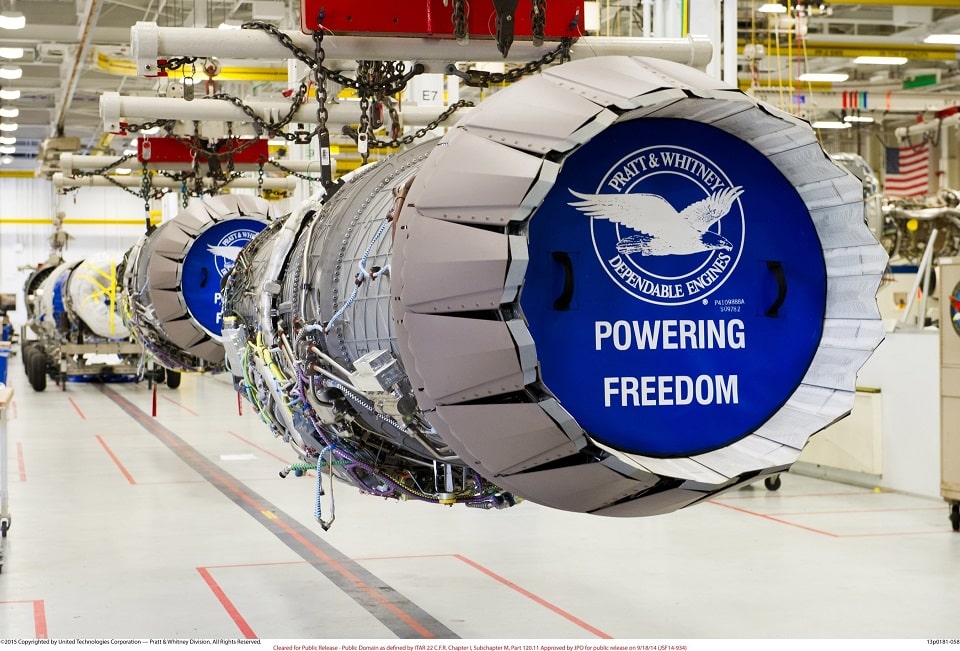Aerospace
Pratt & Whitney awarded $66 million for F135 Engine Core Upgrade work

A $66 million definitized contract modification for the F135 Engine Core Upgrade preliminary design work has been granted to Pratt & Whitney, an RTX company. This brings the total amount of funding for this engine modernization project that the Connecticut congressional delegation has obtained to $180 million.
The funds will also help with design engineering, programme management assistance, technological maturation, risk mitigation, the purchase of long-lead hardware, and the integration of weapons systems.
Boeing awarded $200m contract to support F/A-18E/F aircraft production(Opens in a new browser tab)
Jen Latka, vice president of Pratt & Whitney for the F135 programme, stated, “We’re incredibly appreciative of the constant support we receive from the entire Connecticut delegation. We’ll use this financing to forward our Engine Core Upgrade’s preliminary design work quickly, which will keep us on schedule to start delivering this critical capability in 2028.
The U.S. Air Force, U.S. Marine Corps, and U.S. Navy decided to improve the F135 rather than get a brand-new engine in March 2023. The choice was made public as a part of President Biden’s budget proposal for 2024.
“A modernized F-35 needs a modernized engine to support it. The additional $66 million for the F135 Engine Core Upgrade we’ve secured will help us maintain a skilled work force in Connecticut and around the country to deliver this much-needed capability,” said Rep. Rosa DeLauro, ranking member of the House Appropriations Committee. “Upgrading the F135 is the right decision to support our national defense priorities and defense industrial base, and I’ll continue to ensure this program gets the support and funding it needs.”
All international F-35 operators can reach Block 4 capability more quickly, more affordably, and with less risk by using the F135 ECU. By preventing disruptive and expensive air vehicle upgrades and utilising the current global sustainment infrastructure, it is optimised for all three F-35 variants and will result in lifecycle cost savings of $40 billion.

Aerospace
Boeing Transfers Rocket Stage to NASA, Paving Way for Human Moon Mission

Boeing has achieved a significant milestone by providing NASA with the second core stage of the Space Launch System (SLS) rocket.
This crucial component, crafted at NASA’s Michoud Assembly Facility (MAF), is set to propel the Artemis II crew into lunar orbit, marking humanity’s return to deep space after a 50-year hiatus.
The monumental Boeing-built rocket stage, the largest element of the Artemis II mission, will embark on a journey aboard the Pegasus barge, traveling 900 miles to NASA’s Kennedy Space Center.
Comparison of two legendary aircraft B777x vs B747 aircraft:Click here
Upon arrival, it will be meticulously integrated with other essential Artemis II components, including the upper stage, solid rocket boosters, and NASA’s Orion spacecraft within the iconic Vehicle Assembly Building. This intricate integration process is a vital step toward the eagerly anticipated Artemis II launch, slated for 2025.
“Boeing-built products helped land humankind on the moon in 1969, and we’re proud to continue that legacy through the Artemis generation,” remarked Dave Dutcher, vice president and program manager for Boeing’s SLS program. “Together, with NASA and our industry partners and suppliers, we are building the world’s most capable rocket and paving the way to deep space through America’s rocket factory in New Orleans.”
NASA, Lockheed Martin Reveal X-59 Quiet Supersonic Aircraft:Click here
The delivery of Core Stage 2 marks a significant achievement in the evolution of the SLS rocket. Towering over 200 feet and powered by four RS-25 engines, this core stage, coupled with two solid-fueled booster rockets, will generate a staggering 8.8 million pounds of thrust. This immense power is crucial to launching Artemis II and future missions into the vast expanse of space.
The SLS rocket stands unparalleled in its capability to transport both crew and substantial cargo to the moon and beyond in a single launch. Its extraordinary capacity will facilitate the delivery of human-rated spacecraft, habitats, and scientific missions to destinations including the moon and Mars, ushering in a new era of space exploration.
-

 Travel1 week ago
Travel1 week agoAir India to Expand US Operations with Three New Routes After a Decade
-

 Travel2 weeks ago
Travel2 weeks agoWhy We Should Avoid These Stamps in a Passport
-

 Airlines1 month ago
Airlines1 month agoInvestigations Reveal Fake Chinese Titanium in Boeing and Airbus Jets
-

 Tech4 weeks ago
Tech4 weeks agoChina’s CATL Plans 1,800-Mile Electric Plane Launch by 2027
-

 Airport3 days ago
Airport3 days agoTop 10 Largest Airports in the World by Size
-

 Aerospace4 weeks ago
Aerospace4 weeks agoChina’s Fighter Jets Turn Wings into Autonomous Drones
-

 Airlines4 days ago
Airlines4 days agoAir India Rolls Out A350s for Delhi-New York JFK and Newark Routes
-

 Defence3 weeks ago
Defence3 weeks agoBoeing Enhances Chinook with New Engines and Block II Upgrades at $96 Million







